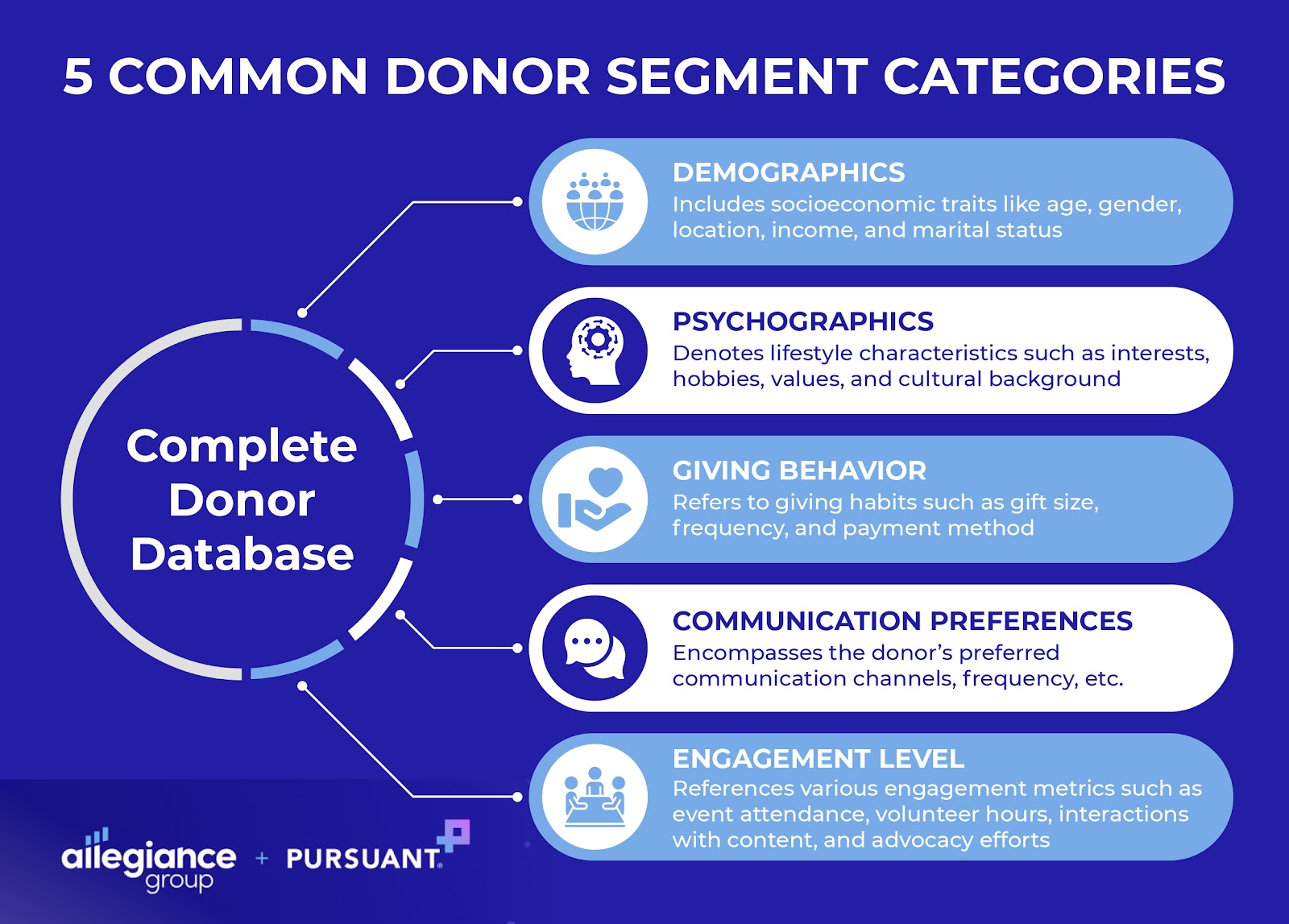
When fundraising via social media, your goal should be twofold. The first objective is to find new potential supporters and introduce them to your organization. The second is to foster engagement among those who already interact with your cause and invite them to contribute to your fundraisers. Working with social media influencers can help you accomplish both parts of this goal.
Many nonprofits integrate influencer programs into their digital marketing campaigns to reach and engage audiences. 52% of the nonprofits included in the 2025 M+R Benchmarks Report reported working with influencers to expand their reach on social media. Of these organizations, 60% used influencer programs to drive direct fundraising campaigns, and 65% used them to inspire advocacy or volunteer actions.
We’ll explore the best methods for identifying potential influencers, engaging them in your cause, and launching engaging influencer campaigns that drive support for your nonprofit. But first, familiarize yourself with key ethical considerations.
Remember Ethical Considerations
Your reputation as a trustworthy, credible organization is one of your nonprofit’s most valuable assets. Maintain meaningful, transparent relationships with your audience by considering the following before launching influencer partnerships:
- Transparency: As NPOInfo’s guide explains, fostering a culture of transparency, accountability, and responsible financial stewardship is an ongoing process required to build trust with donors. To stay transparent, always clearly disclose partnerships with influencers, indicate paid promotions, and communicate the intentions behind the partnership.
- Privacy: Respect your influencers’ and supporters’ privacy. Any data collected during the campaign, such as contact information, should be handled according to data privacy laws. If using the influencer’s personal stories, make sure to obtain informed consent before sharing.
- Authenticity: Choose influencers who truly align with your values and have a passion for your mission. Don’t opt for large influencers who are only in it for exposure or compensation. Encourage influencers to share their own thoughts, experiences, and feelings in content.
Work with your stakeholders to establish specific guidelines for influencer partnerships, including a robust vetting process. After all, building trust with supporters can take months or years of work—you don’t want all that work to be sullied by one negative viral moment.
3 Steps for Identifying & Engaging Potential Influencers
1. Identify Prospects
The easiest way to identify the type of influencer you are looking for is through a third-party data insight platform. This tool helps you identify supporters who rank high for usage and influence on social media, indicating that they’re more likely (and willing) to help you achieve your social media goals.
Allegiance Group + Pursuant’s guide recommends analyzing the following types of data:
Alt text: Five common donor segmentation categories, listed below.

- Demographics: Socioeconomic traits like age, gender, location, etc.
- What to look for: Demographics that use and prefer the social media channel you have in mind. For instance, more than 60% of Instagram users are 18 to 34 years old.
- Psychographics: Lifestyle characteristics such as interests, hobbies, and values.
- What to look for: Supporters whose personal values and interests overlap with your cause. An environmental nonprofit might look for hiking influencers.
- Giving behavior: Giving habits, such as gift size, frequency, and payment method.
- What to look for: Supporters who contribute regularly, signaling a higher affinity for your cause. Check for supporters who have participated in past peer-to-peer campaigns, as they already have experience fundraising on behalf of your organization.
- Communication preferences: The supporter’s preferred communication channels, frequency, formats, etc.
- What to look for: Donors who heavily engage with the target platform. They’ll already be familiar with it and are more likely to have an established following.
- Engagement level: Engagement metrics like fundraising event attendance, volunteer hours, and interactions with content.
- What to look for: Supporters who actively engage with your social media presence by liking, sharing, and commenting on your posts or create their own content related to your cause. Other participation indicators, like attending events or volunteering, signal deep engagement with your cause (a positive sign!).
Once you’ve filtered down your file, review top candidates’ profiles on the target platform(s). If a prospect’s profile is public, dive deeper into their page. How big is their following? Do they post about your organization, cause, or other social good initiatives? Does their online persona align with your values and identity? These questions will help you narrow down your list to the top potential influencers.
2. Engage Potential Influencers
Now it’s time to reach out to your prospective influencers. Approach this thoughtfully and personally, giving influencers insight into how their contribution would fit into your nonprofit’s marketing plan and mission. Here are the four steps to follow at this stage:
- Initiate personalized outreach. Reach out using the donor’s preferred communication channel. Use a warm, personal greeting, such as: Hi Dana, we’ve noticed your impactful posts and passion for animal welfare. We’d love to explore ways to collaborate on Instagram to amplify our shared goals.
- Offer a compelling program overview. Give supporters insight into the influencer program, emphasizing the benefits and responsibilities. Provide a timeline, expectations, details around payment (if applicable), and what kind of guidance you’ll offer them.
- Highlight shared values and impact. Underscore the connection between the influencer’s values and your mission. Consider adding impact metrics from past programs or campaigns to highlight your nonprofit’s successes.
- Provide next steps. Outline the next steps for getting started, such as scheduling a call, joining a platform, and reading welcome materials.
Additionally, consider sharing details about unique or successful past initiatives to demonstrate your marketing prowess. For instance, perhaps your nonprofit regularly conducts social direct messaging campaigns that allow you to fundraise and form personal connections with supporters via direct messages.
3. Launch Engaging Campaigns
Once influencers agree to partner with your nonprofit, you can start rolling out the campaign. While each campaign will be different and should align with your organization’s broader goals, these pointers can help you make the partnership a success:
- Embrace each platform’s unique features. Every social platform has its own quirks and best practices, from posting engaging videos to using a more casual tone. Work with influencers to devise the best ways to engage audiences and persuade them to take action. For instance, an animal welfare organization took advantage of the personal nature of Facebook by launching a social direct messaging campaign, seeing a 739% increase in shares and 27.9% conversion rate.
- Provide templates, guidelines, graphics, etc. Most influencers are not fundraising experts, so they’ll likely need help from your team to support their efforts. Additionally, the partnership should be relatively simple on their end, with your nonprofit providing everything they need to promote the cause.
- Monitor campaigns and offer support. Don’t wait until the end of the partnership to measure the campaign’s success. Instead, track donations and engagement in real time, providing updates and advice to your influencers as needed.
Remember that while the influencer isn’t a veteran fundraiser, they are the expert when it comes to their audience, personal brand, and platform. Listen to any ideas or concerns they have about the campaign, and encourage them to make changes they think will have a positive impact on content. While you want posts to support your mission and values, the influencer’s personality should still shine through.
Many nonprofits are starting influencer programs, and for good reason! Start these partnerships off on the right foot by identifying qualified candidates and acknowledging the work they’ve already done for your cause. This way, you can take advantage of the opportunity to tap into new audiences via a trusted ambassador, winning over loyal new supporters for your cause.



















